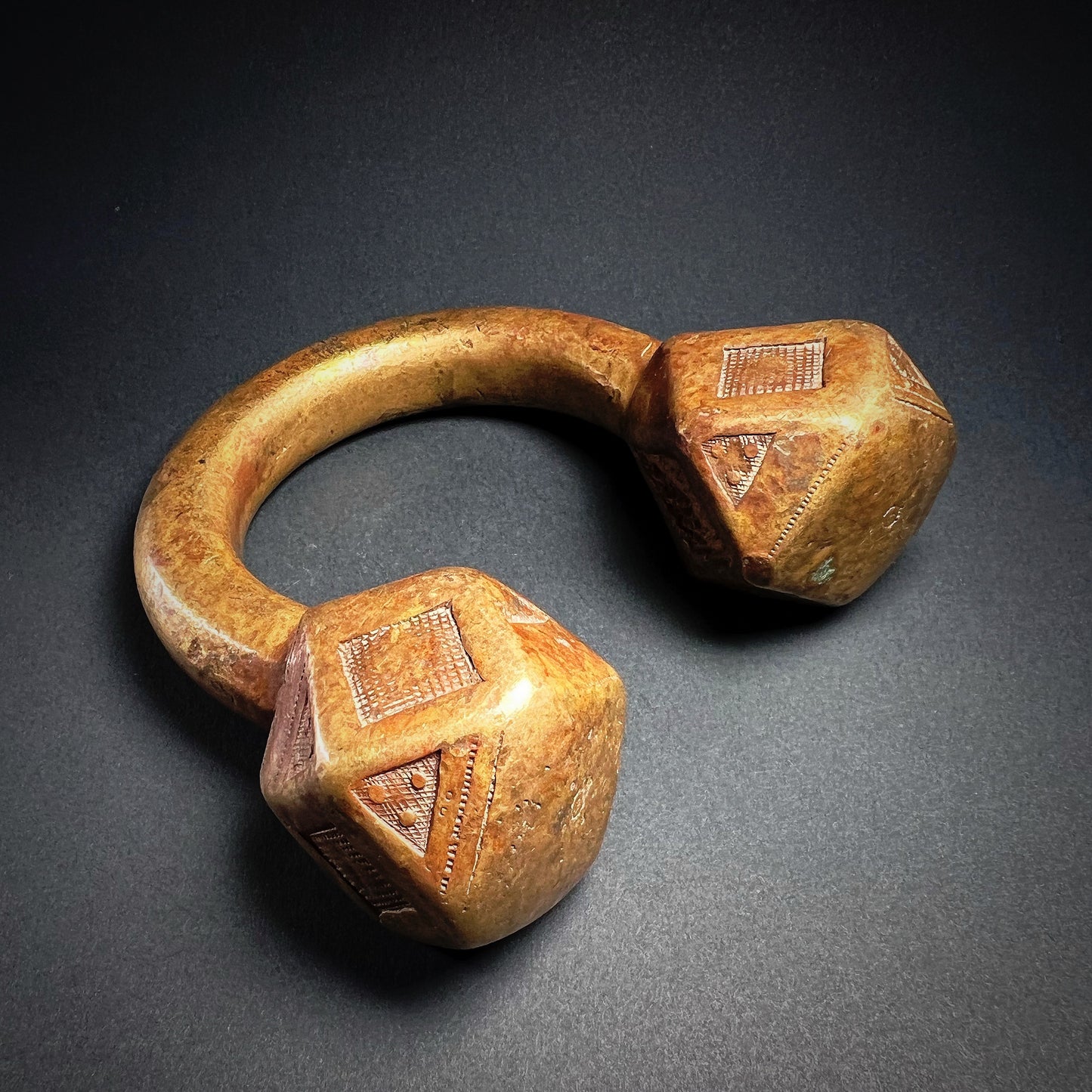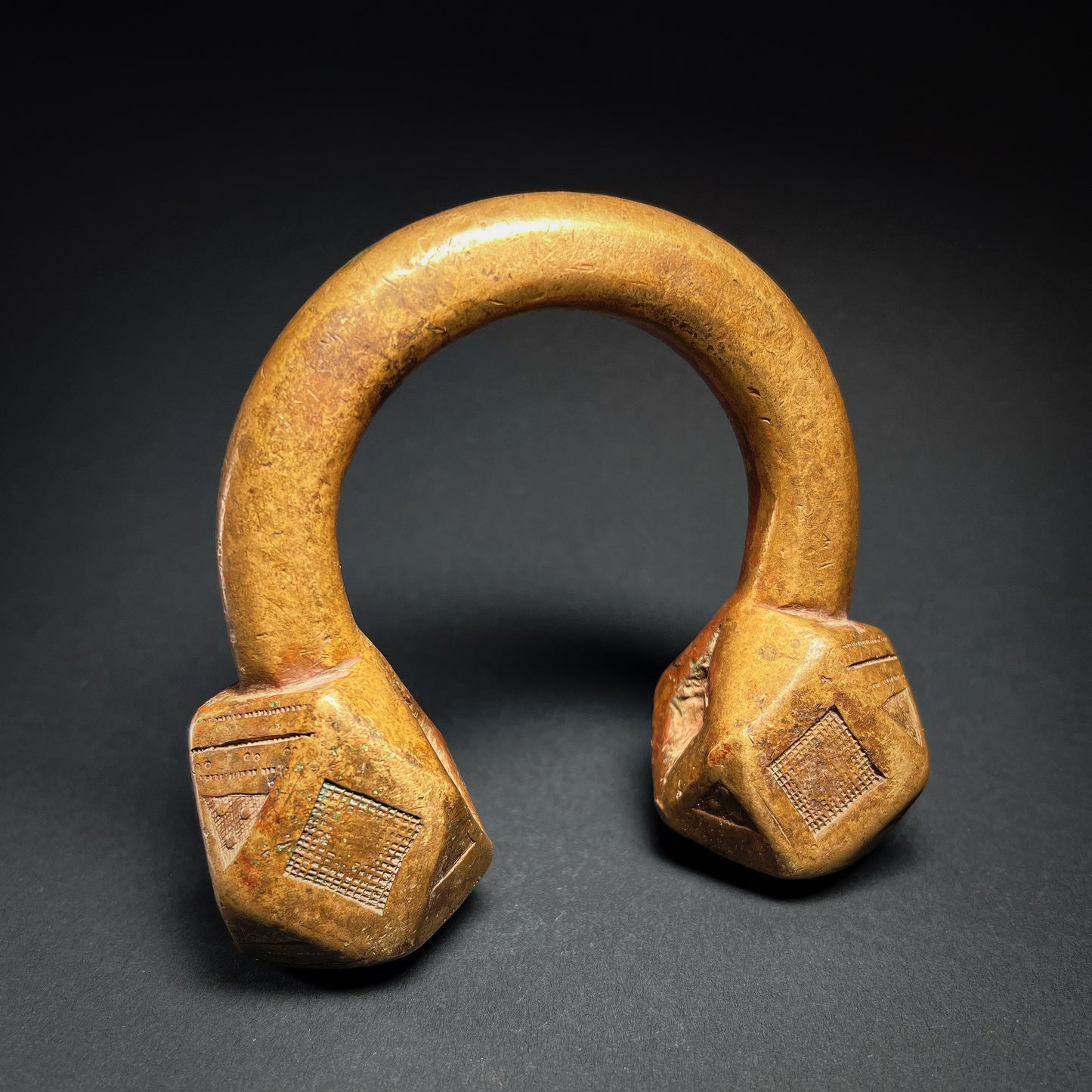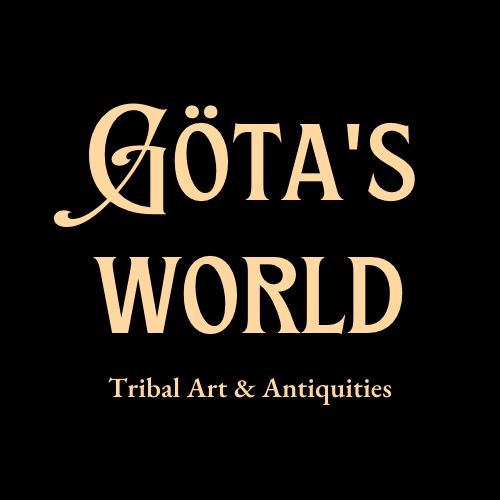Tuareg Bronze Anklet Currency (Manilla)
Tuareg Bronze Anklet Currency (Manilla)
Couldn't load pickup availability
Tuareg people, early to mid-20th century, Agadez Region, Niger
Exceptional cast bronze anklet currency piece with the classic U-shaped body and powerful, faceted terminals enriched with etched and stamped geometric motifs. Heavy, beautifully sculpted, and boldly proportioned, this impressive anklet would have added a distinctive weight and rhythmic sway to the wearer’s step—both an adornment and a portable store of wealth.
The Tuareg, a traditionally nomadic Berber-speaking people, inhabit the vast expanse of the central and western Sahara and the north-central Sahel. Probably descended from the ancient Garamantes—described by Herodotus—they became legendary for their mastery of trans-Saharan caravan routes. For more than two millennia, Tuareg caravans transported gold, salt, ivory, textiles, slaves, and other high-value goods between the great cities of the southern Sahara and the North African coast. Within this economy, metalsmiths (ineslemen) fashioned elegant ornaments from bronze, copper, and silver, which served not only as personal adornment but also as a principal medium for storing, displaying, and exchanging wealth.
This piece belongs to a wider family of manillas, a form of commodity money cast primarily in bronze or copper throughout West Africa. Produced in numerous variations—each region recognising and valuing specific forms—manillas circulated long before European colonial contact and remained in use through the mid-20th century. Typically horseshoe-shaped with facing lozenge-like terminals, they functioned as currency, prestige jewelry, and ritual payments. The name “manilla” is variously attributed to the Spanish manilla (“bracelet”), Portuguese manilha (“hand-ring”), the Latin manus (hand), or monilia (necklaces).
Historically, manillas played a significant role in regional trade networks, including the Atlantic trade, and were central to transactions such as bridewealth, compensation, settlement of disputes, and high-status exchange. In places such as Calabar in southeastern Nigeria—a key early distribution center—values were well established: around 1505, a slave might cost 8–10 manillas, while a large elephant tusk might be acquired for a single copper manilla.
This superb example, with its powerful sculptural form, deep patination, and finely executed decoration, stands as both an authentic ethnographic artifact and a visually striking object of wearable currency. A rare and highly desirable piece for collectors of African metalwork, Saharan jewelry, and traditional monetary systems.
Good condition. Wear consistent with age and use. Beautiful polished patina. Size approx. 11,4cm x 10,0cm x 4,0cm.
Provenance: Private collection, Morocco.
For a similar examples see:
Bracelet, The British Museum, Accession Number: Af1979,01.1459 (https://www.britishmuseum.org/collection/object/E_Af1979-01-1459)
Anklet, The Metropolitan Museum of Art, Accession Number: 67.145.2 (https://www.metmuseum.org/art/collection/search/451912)
Bracelet, The Brooklyn Museum, Accession Number: 1995.172.2 (https://www.brooklynmuseum.org/opencollection/objects/154515)
References and further reading:
The Teach Yourself Guide to Numismatics, C.C. Chamberlain, English Universities Press. 1963, p. 92.
The West African Manilla Currency: Research and Securing of Evidence from 1439-2019, Rolf Denk, Tredition GmbH, Hamburg, 2020.
Primitive Money in its ethnological, historical and economic aspects, Paul Einzig, Eyre & Spottiswoode, London, 1949.
Object biographies, Manilla or Penannular Bracelet Currency, Eric Edwards, Balfour Library, Pitt Rivers Museum, January 29th, 2010. (https://web.prm.ox.ac.uk/rpr/index.php/objectbiographies/78-manilla.html)



-
Shipping
The shipment will be prepared in the course of 3-5 days and dispatched via Posti Group Oyj or purchased item(s) can be picked up from our shop during the store's opening hours (Tarkk’ampujankatu 4, 00140, Helsinki, Finland). Within the Finland, all items are shipped via Posti Group Oyj unless otherwise requested. We pack the items carefully and mainly in recycled materials because we want to save nature. You will receive the tracking number for your items by e-mail.
-
Returns
Returns and exchange will be accepted within fourteen days (14) of receipt at the purchaser’s cost to include freight and packaging. Items must be returned in the same condition as when they were shipped, and will not be accepted if damaged or altered in any way. Please inform us via email (info@gotanmaailma.fi) or by calling +358408408352 before sending. We do not accept returns more than 14 days after delivery.



